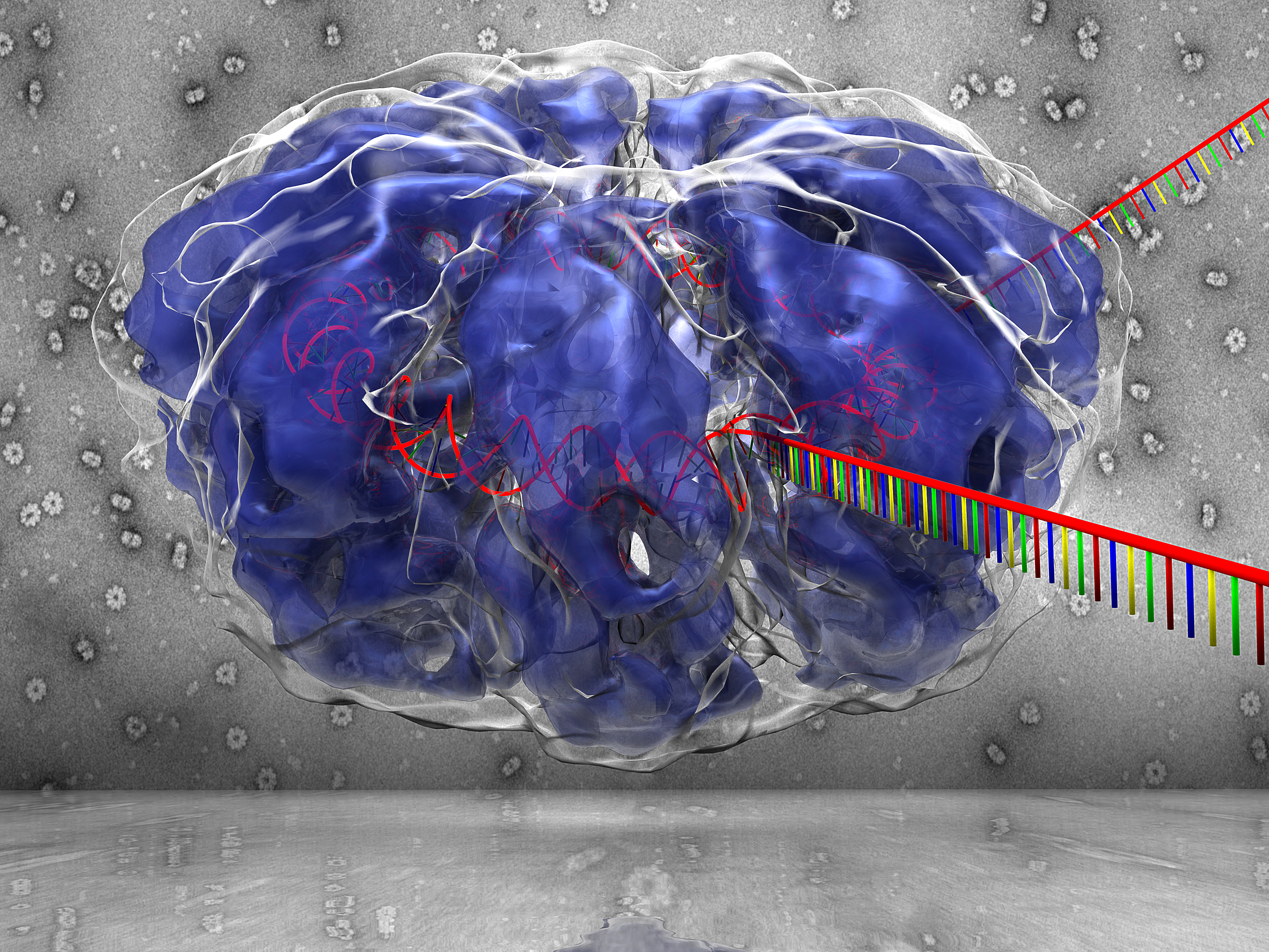BioArt 2014
Snapshots of Life: A Colorful Look Inside the Retina
Posted on by Dr. Francis Collins

Credit: Amy Robinson, Alex Norton, William Silversmith, Jinseop Kim, Kisuk Lee, Aleks Zlasteski, Matt Green, Matthew Balkam, Rachel Prentki, Marissa Sorek, Celia David, Devon Jones, and Doug Bland, Massachusetts Institute of Technology, Cambridge, MA; Sebastian Seung, Princeton University, Princeton, NJ
This eerie scene might bring back memories of the computer-generated alien war machines from Steven Spielberg’s War of the Worlds thriller. But what you’re seeing is a computer-generated depiction of a quite different world—the world inside the retina, the light-sensitive tissue that lines the back of the eye. The stilt-legged “creatures” are actually ganglion nerve cells, and what appears to be their long “noses” are fibers that will eventually converge to form the optic nerve that relays visual signals to the brain. The dense, multi-colored mat near the bottom of the image is a region where the ganglia and other types of retinal cells interact to convey visual information.
What I find particularly interesting about this image is that it was produced through the joint efforts of people who played EyeWire, an internet crowdsourcing game developed in the lab of computational neuroscientist Sebastian Seung, now at Princeton University in New Jersey. Seung and his colleagues created EyeWire using a series of high-resolution microscopic images of the mouse retina, which were digitized into 3D cubes containing dense skeins of branching nerve fibers. It’s at this point where the crowdsourcing came in. Online gamers—most of whom aren’t scientists— volunteered for a challenge that involved mapping the 3D structure of individual nerve cells within these 3D cubes. Players literally colored-in the interiors of the cells and progressively traced their long extensions across the image to distinguish them from their neighbors. Sounds easy, but the branches are exceedingly thin and difficult to follow.
Cool Videos: A Look Inside a Mouse’s Lung
Posted on by Dr. Francis Collins
If you have ever wondered what it is like to be an oxygen molecule inhaled through the lungs, here is your chance to find out! In this movie, we take a fantastic voyage through the slippery airways of the adult mouse lung.
We begin at the top in the main pipeline, called the bronchus, just below the trachea and wind through a system of increasingly narrow tubes. As you zoom through the airways, take note of the cilia (seen as goldish streaks); these tiny, hair-like structures move dust, germs, and mucus from smaller air passages to larger ones. Our quick trip concludes with a look into the alveoli — the air sacs where oxygen is delivered to red blood cells and carbon dioxide is removed and exhaled.
Cool Videos: HIV in Action
Posted on by Dr. Francis Collins
There aren’t too many molecular biologists who have spent a 3-month stint in Hollywood. But Janet Iwasa is not your average molecular biologist. After earning her PhD in 2006, she took a break from the lab to take a crash course in animation techniques at the Gnomon School of Visual Effects.
While her classmates produced lots of cool footage worthy of the silver screen, Iwasa wanted to learn how to depict in colorful 3D action, some of the complex molecular processes that are so difficult to convey using static 2D illustration. Among her creations is this 2-minute, rough-draft animation showing how the human immunodeficiency virus (HIV) recognizes and infects a type of immune cell known as a T cell.
Snapshots of Life: Lost Connections in Pompe Disease
Posted on by Dr. Francis Collins

Caption: Abnormal connections between leg muscle fibers (red) and nerves (green) in Pompe disease.
Credit: Darin J. Falk, A. Gary Todd, Robin Yoon, and Barry J. Byrne, University of Florida, Gainesville
Mistletoe? Holly? Not exactly. This seemingly festive image is a micrograph of nerve cells (green) and nerve-muscle junctions (red) in a mouse model of Pompe disease. Such images are helping researchers learn more about this rare form of muscular dystrophy, providing valuable clues in the ongoing search for better treatments and cures.
People with Pompe disease lack an enzyme that cells depend on to break down a stored sugar, known as glycogen, into smaller glucose molecules that can be readily used for energy. Without enough of this enzyme, called acid alpha-glucosidase (GAA), glycogen can accumulate destructively in the liver, heart, and skeletal muscles, making it increasingly difficult to walk, eat, and even breathe.




